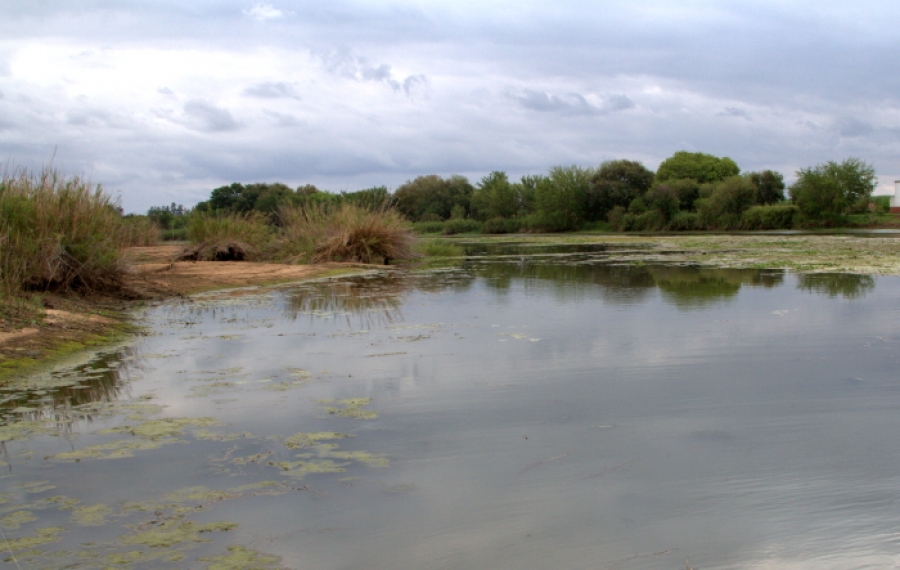Ngwenya Lodge is near Komatipoort on the Mozambique border. The Kruger National Park lies directly across the Crocodile River from the lodge and our annual getaway here allows us to spend time on a deck, safely behind an electric fence, watching the park animals come down to drink from the river. The river is also home to hippo, crocodile and plenty of fish. I spend lots of time on the deck just observing the fish; tilapia (blue, canary and red), tigerfish and catfish.
I found a brochure in the reception hall and gave Anton Atkinson, fly fishing guide of Tiger Fishing Memories a call. We set a date, and yes he had fly tackle as well.
On the appointed day we drove off leaving the arid grey Kruger National Park bush behind us. Crossing the N4 highway heading toward the Komati River and Swaziland the surrounds were greening up significantly. I met Anton at a bridge below a weir on the Komati and we went to his boat parked on a nearby farm. Being privately owned there is limited access and one needs a boat because there are plenty of resident crocodile and hippos. Anton has an eminently suitable boat with all the bells and whistles and is a master at reversing a trailer.
Click in images to enlarge
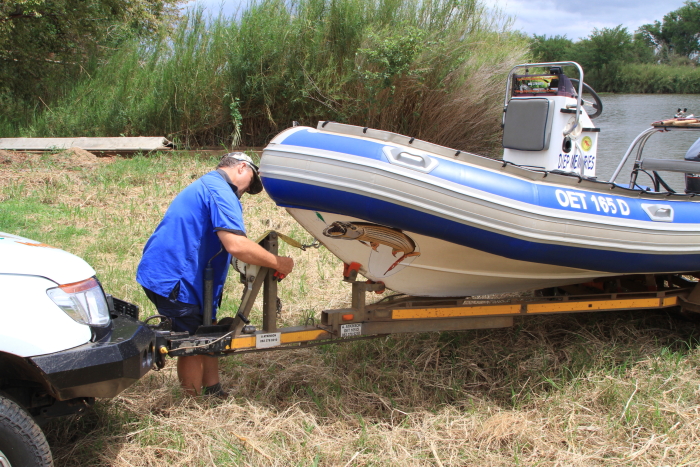
Launching
The Komati has been weired in this district, apparently about a dozen weirs in all. The land is mostly dedicated to sugar cane farming. At the launch spot, a dredger was operating; the locals dredge the river for building sand and control the deposited silt in the process.
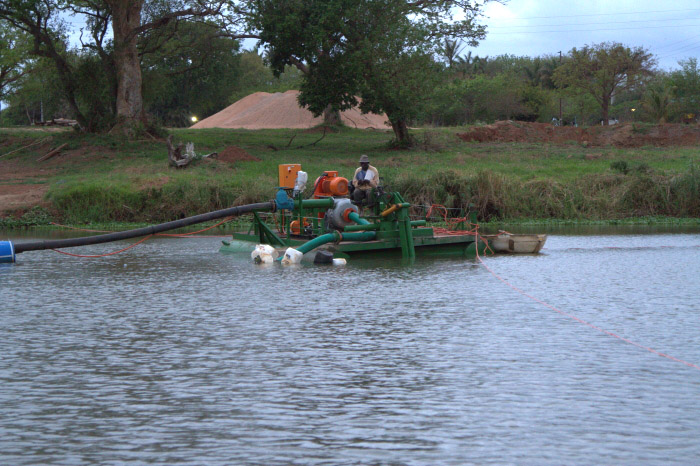
Dredger in operation
Tall reeds line the banks and there are rafts of lily pads and water hyacinths. The bottom varies from sandy to pure rock. Every few hundred meters a large pipe enters the water. These are irrigation pick-ups, and they need them because sugarcane is a very thirsty crop.
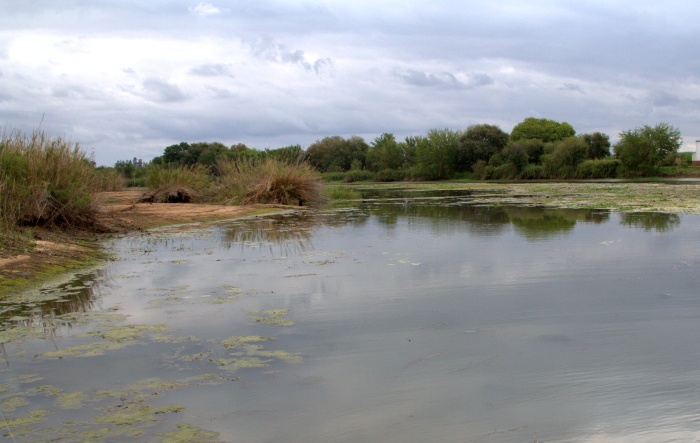
Typical Komati habitat
I set up the rod as we moved slowly out into the current with Anton explaining, ”Expect tilapia along those weeds, there are smaller tigers in the shallows over there and we normally get the bigger ones in the deeper sections.”
This stretch of water was home to spectacular bird life. Fish Eagles were ever present as well as many kingfisher species. There were Jacanas and Squacco Herons in greater numbers than I have ever seen before. They were on the rafts of hyacinth. In the late afternoon I discovered that the Jacana is a communal rooster with heaps of them gathering on the hyacinths.
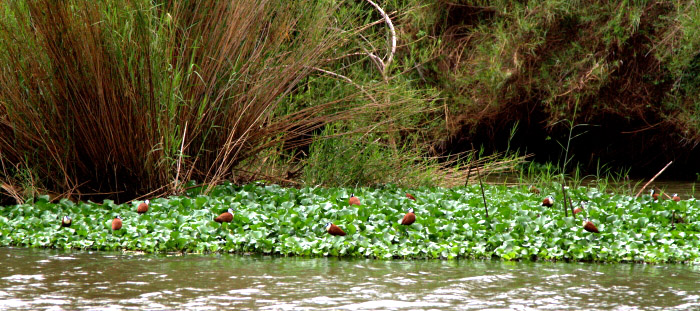
Jacana on the hyacinths
Three days prior to my booking, the water was almost crystal clear, but a storm upstream had caused some murkiness. We nevertheless had visibility of at least a meter and were able to see the circular tilapia nests as we drifted over the shallows.
A three weight is a heavy outfit to me on my local waters and it took a while to get used to the nine weight Anton supplied. “You need some muscle," he said, "we’ve caught tigers up to five and a half kg here”. Personally I think a six weight would have sufficed.
The wind had come up necessitating occasional repositioning. I got a couple of pulls which I took to be tilapia from Anton’s description of their favoured habitat. We moved across the river, through the lily pads and onto the shallows. Anton told me to expect smaller tigers here and I got one.
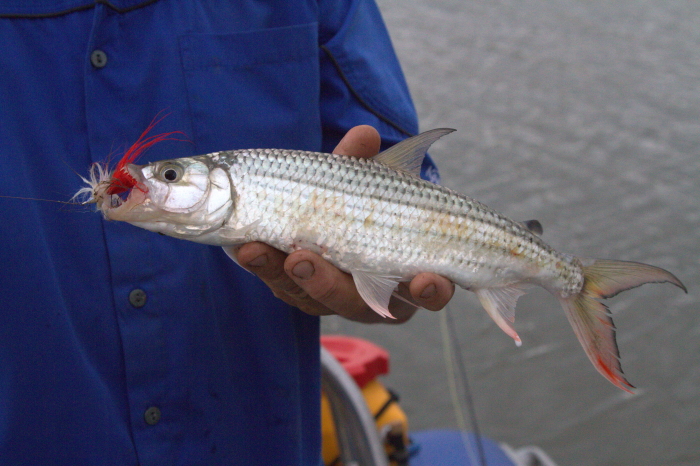
A small but pretty tigerfish
Anton (I insisted that he fished as well) caught a red-breasted tilapia, the first I have seen close up and it certainly is red, in fact as red as the Red-headed Weaver I had seen for the first time next to the crocodile river a few days ago.
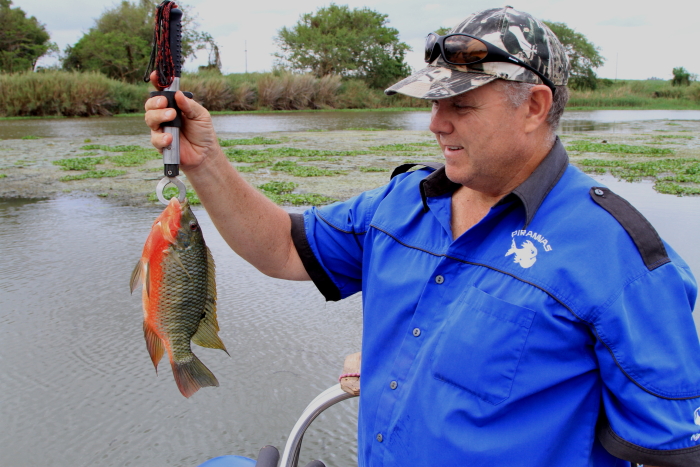
Anton with red-breasted tilapia
We moved upstream to find a rockier bottom and hopefully more flow, drifting in amongst the water lilies, casting into gaps in the reeds, or else into the deeper water in search of larger specimens.
“Hey Anton, I’ve got a piece of wire”. I shouted."No, it’s a net!" he replied. We started pulling it in, releasing the surviving tilapia and catfish. There were also a few dead fish. This really riled Anton. We had in fact seen a local paddling the remains of a polystyrene kayak upstream earlier. Not very clever with four meter long crocs about. Anton then told me that some people net the river.
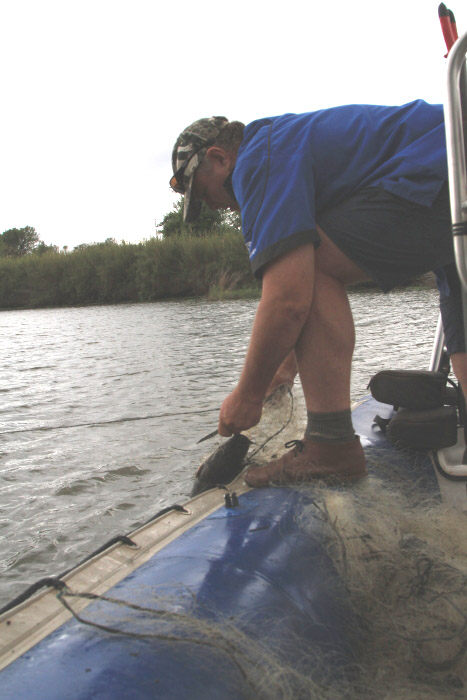
Pulling in the trap net
Among the creatures to come out of the net were what Anton tells me are Australian freshwater crayfish, that are good eating. Apparently they appeared after an attempt at commercial farming in Swaziland when a dam wall broke. I’m sure that they are a problem, but they must surely also prove to be a significant food source in the river.
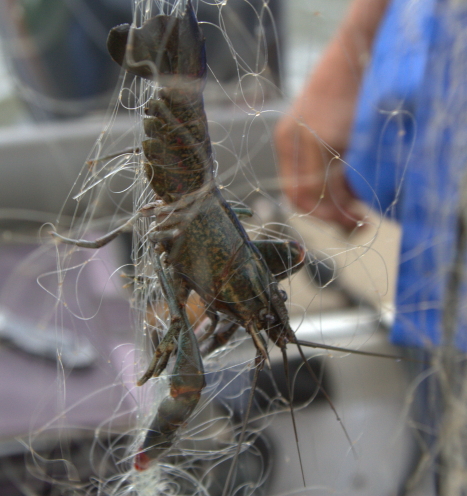
An Australian freshwater crayfish caught up in the net
Anton tells me that he has access to quite a lot of water in the area, river as well as some local farm dams, where one can target warm water species. He has fly, spinning and even bait tackle available for his clients. I’m definitely going to give him a call when I'm next in the area.
Anton Atkinson:- 082 378 9210 or This email address is being protected from spambots. You need JavaScript enabled to view it.

